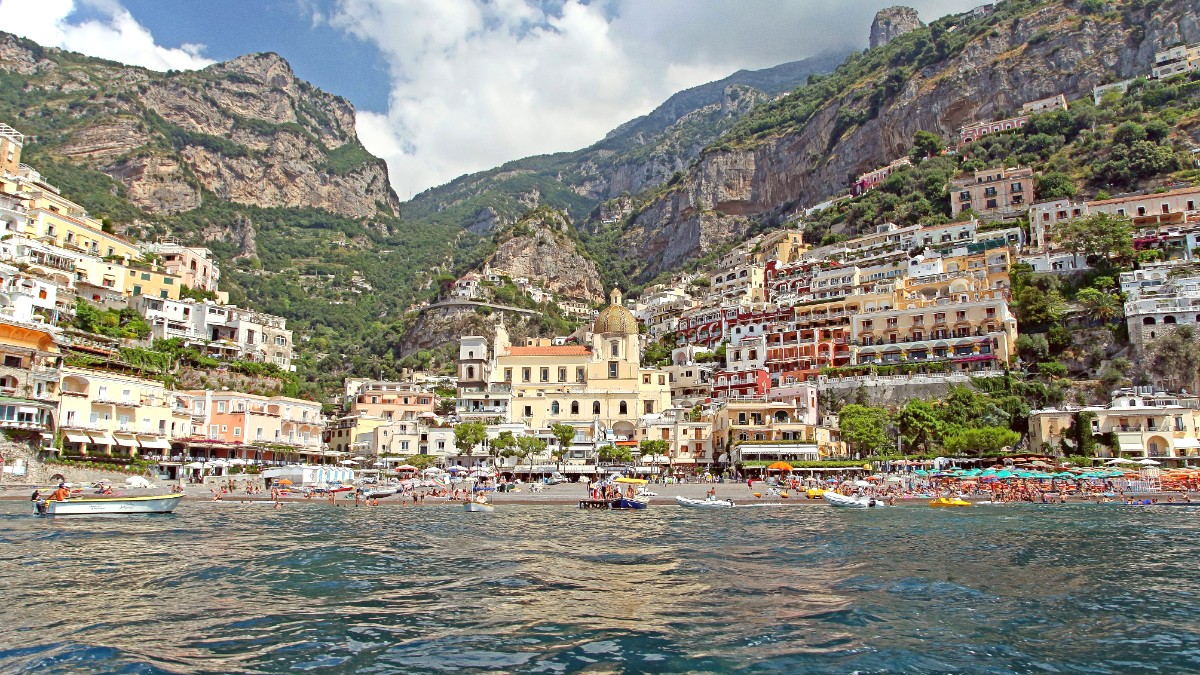
Campania, Italy
The cuisine of Positano and the Amalfi Coast carries deep roots in the Campania region's culinary heritage, strongly shaped by its coastal location and abundant local produce.
Fresh Seafood: A cornerstone of the diet. Preparations emphasize the natural flavors. Mediterranean Diet: This diet emphasizes fresh vegetables, olive oil, grains, and legumes. Lemons: Its distinct aroma and flavor sign the coast. History: The local cuisine mirrors a history of simplicity and resourcefulness, using readily available ingredients. Recipes pass down through generations.
While fresh seafood and lemon-infused dishes appear prominent on the coast, inland Campania is famous for specific culinary contributions like Neapolitan pizza and hearty meat dishes.
Meal Times: Lunch typically spans from 1 PM-3 PM; Dinner from 8 PM-10 PM. Coperto: A per-person cover charge frequently appears on the bill. Servizio: A service charge (10-15%) may appear on the bill. Coffee: Espresso is for quick fixes; Cappuccinos are for breakfast only. Bread: Intended for soaking up sauces. Patience: Service can be slower; embrace the leisurely pace.
Colazione (Breakfast): Light and simple. Pranzo (Lunch): Full meal or lighter option. Cena (Dinner): Main multi-course meal (Antipasto, Primo, Secondo, Contorno, Dolce).
A simple yet flavorful pasta dish featuring fresh clams, garlic, olive oil, and white wine. This classic coastal dish showcases seafood freshness.
A must-try for seafood enthusiasts.
"Fish in crazy water," involving fresh local fish cooked in a broth with cherry tomatoes, garlic, and parsley. It results in a light, aromatic, and flavorful meal.
Highlighting the natural taste of fish.
A regional, short, thick pasta, pairing beautifully with a rich mixed seafood sauce, including mussels, clams, and shrimp.
A local pasta shape with fresh seafood.
Pizza sold by the slice, often by weight, for a quick, casual, and inexpensive meal. Perfect for lunch on the go.
A cone or plate of mixed fried seafood, often including small fish, calamari, and shrimp. A delicious, savory snack for a walk.
Vegetarian dishes are relatively easy to find, with many vegetable-based pasta dishes, grilled vegetables, and salads. Vegan options are more challenging but possible by requesting dishes without animal products. Focus on simple vegetable-based meals.
Halal and Kosher options are very limited or non-existent in Positano. Travelers with these dietary requirements should plan to self-cater using local produce or bring pre-packaged meals.
Awareness of gluten-free needs grows in Italy. Some restaurants may deliver gluten-free pasta or pizza. Always inquire and confirm. Cross-contamination risks appear in smaller kitchens. Inform staff clearly about any severe allergies.
Use Google Translate or similar apps for real-time translation or to show specific phrases about your dietary needs in Italian.
Essential for clear communication.
Prepare small, printed cards in Italian detailing your allergies or dietary restrictions. This avoids miscommunication. For severe allergies, consider carrying a Chef card.
A clear and concise way to communicate.
Standard charges, not tips. Check bill.
Lunch 1-3 PM, Dinner 8-10 PM. Closures between.
Espresso standing. Cappuccino for breakfast only.
Use for soaking sauces ('fare la scarpetta').
A popular, traditional, and often bustling spot known for its fresh seafood and classic pasta dishes. Reservations are often essential, especially for dinner. Expect authentic flavors and a lively atmosphere.
A reliable choice for a satisfying meal.
Supplies great views and solid traditional dishes in a more relaxed setting. A good option for families seeking a pleasant dining experience.
Good views and family-friendly.
A more modern establishment delivering contemporary Mediterranean cuisine with a chic ambiance. A good choice for something different from traditional trattorias.
Positano holds no large, traditional food markets. Small local "alimentari" (grocery stores) supply fresh produce. International cuisine is limited; the focus remains on regional heritage.
Lunch typically spans from 1 PM to 3 PM. Dinner starts later, usually from 8 PM to 10 PM or even later in summer. Many restaurants close between lunch and dinner service.
A "coperto" (cover charge) frequently appears (typically €1-€4) for bread and table service. A "servizio" (service charge), usually 10-15%, may appear on the bill, especially for larger groups. If this charge exists, no additional tip is customary.
Italians typically consume espresso standing at the bar. Cappuccinos are strictly for breakfast. Bread, often served with meals, is for "fare la scarpetta" – using it to soak up delicious sauces.
A famous, rustic beach restaurant accessible only by boat from the Positano pier. It delivers fresh seafood in a casual, charming setting. Book your boat and table in advance for this memorable lunch experience.
Unique boat-only access.
Check local tourism calendars for "sagre" (food festivals). These events celebrate specific local products (e.g., lemon, fish, or mushrooms) and deliver a lively atmosphere with food, music, and drinks.
Experience local traditions.
A light sponge cake soaked in limoncello syrup, filled with lemon cream, and covered with lemon glaze. A signature Amalfi Coast dessert.
A rich chocolate and almond cake originating from the island of Capri, often flourless. A decadent treat.
Seek out artisanal gelaterias for fresh, natural flavors. Sfogliatella, a shell-shaped pastry with ricotta cream, appears in bakeries.
Always try to eat away from the most tourist-heavy spots for better value and a more authentic taste of local cuisine. Look for places where locals are dining.